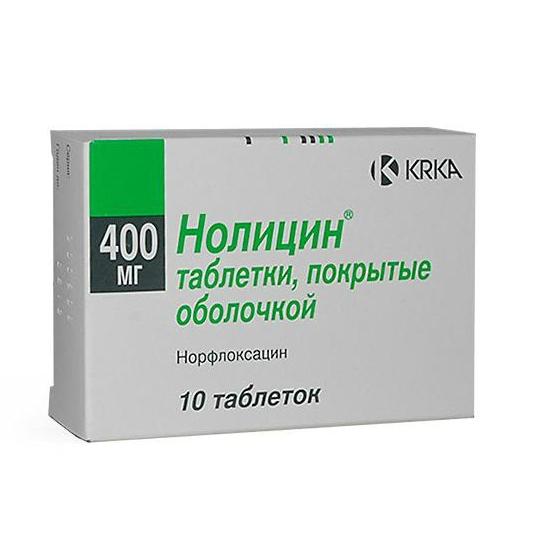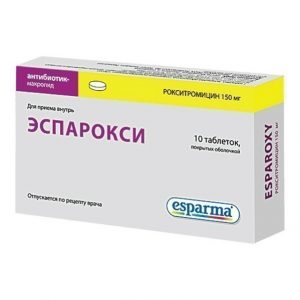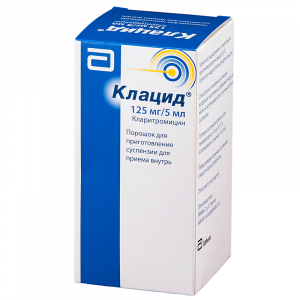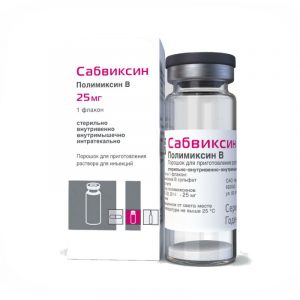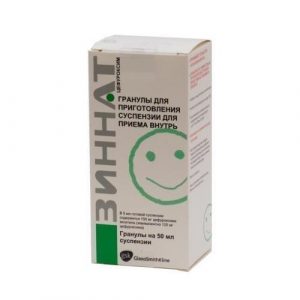Description
Release form
Film-coated tablets.
Packing
10 pcs.
Pharmacological action
An antibacterial agent from the group of fluoroquinolones. It has a bactericidal effect. It acts on the bacterial enzyme DNA gyrase, which ensures supercoiling and, thus, the stability of bacterial DNA. Destabilization of the DNA chain leads to the death of bacteria. It has a wide spectrum of antibacterial action. Sensitive: Staphylococcus aureus (including methicillin-resistant strains of Staphylococcus spp.), Staphylococcus epidermidis, Neisseria gonorrhoeae, Neisseria meningitidis, Escherichia coli, Citrobacter spp., Klebsiella spp., Enterobacter spp. (indole positive and indole negative), Salmonella spp., Shigella spp., Yersinia enterocolitica, Campylobacter jejuni, Aeromonas spp., Plesiomonas spp., Vibrio cholerae, Vibrio parahaemolyticus, Haemophilus influenzae, Chlamydia spp., Legionella spp. Different sensitivity to the drug have: Enterococcus faecalis, Streptococcus spp. (pyogenes, pneumoniae and viridans), Serratia marcescens, Pseudomonas aeruginosa, Acinetobacter spp., Mycoplasma hominis, Mycoplasma pneumoniae, Mycobacterium tuberculosis, Mycobacterium fortuitum.
Indications
Infectious and inflammatory diseases caused by pathogens sensitive to the drug: acute and chronic infectious diseases of the urinary tract (urethritis, cystitis, pyelonephritis)
genital infections: cervicitis, endometritis, chronic bacterial prostatitis
gonorrhea uncomplicated
bacterial gastroenteritis (salmonellosis, shigellosis)
prevention of relapse of urinary tract infections
prevention of sepsis in patients with neutropenia
prevention of diarrhea of travelers.
Contraindications
hypersensitivity to norfloxacin, drug components and other quinolones
glucose-6-phosphate dehydrogenase deficiency
childhood and adolescence (up to 18 years)
pregnancy and lactation of the brain, mild cervical dysfunction , epileptic syndrome, renal / liver failure, the presence of an allergic reaction to acetylsalicylic acid.
Pregnancy and lactation
The safety of use during pregnancy and lactation has not been studied. To prescribe the drug during pregnancy is only for “vital” indications, when the expected benefit to the mother outweighs the potential risk to the fetus. If necessary, the appointment of the drug during lactation should stop breastfeeding.
Special instructions
During treatment with norfloxacin, patients should receive a sufficient amount of fluid (under the control of diuresis).
During therapy, an increase in the prothrombin index is possible (during surgical interventions, the condition of the blood coagulation system should be monitored).
During treatment with norfloxacin, exposure to direct sunlight should be avoided.
If you experience pain in the tendons or at the first signs of tenosynovitis, you must cancel the drug. During therapy with norfloxacin, it is recommended to avoid excessive physical exertion.
If there is an allergic reaction to acetylsalicylic acid, the azo dye E PO (disperse yellow dye, E 110) can cause a hypersensitive reaction, up to bronchospasm.
Influence on the ability to drive vehicles and operate machinery:
care must be taken when driving a car and engaging in other potentially dangerous activities that require increased concentration of attention and speed of psychomotor reactions (especially with the use of ethanol).
Composition
1 film-coated tablet contains:
CORE:
Active ingredient: norfloxacin – 400 mg.
Excipients: povidone, sodium carboxymethyl starch, microcrystalline cellulose, colloidal silicon dioxide, anhydrous, magnesium stearate, purified water (for hydration).
SHELL:
hapromellose, talc, titanium dioxide, dye sunny sunset yellow, Å110 (disperse yellow dye, Å110), propylene glycol.
Dosage and administration
Inside an empty stomach (at least 1 hour before or 2 hours after eating) and drink plenty of fluids.
Unless specifically prescribed by a doctor, the following doses are recommended: 1 tablet (400 mg) 2 times a day. The duration of treatment is from 7 to 14 days, if necessary, a longer treatment is carried out.
In chronic bacterial prostatitis, 400 mg is prescribed 2 times a day for 4-6 weeks or more.
In uncomplicated gonorrhea, the drug is prescribed once at a dose of 800 – 1200 mg or 2 times a day, 400 mg for 3-7 days.
With bacterial gastroenteritis (shigellosis, salmonellosis), 400 mg is recommended 2 times a day for up to 5 days.
To prevent diarrhea of travelers, it is recommended to take 400 mg per day 1 day before departure, during the entire trip and 2 days after its completion (no more than 21 days).
For the prevention of sepsis with neutropenia, 400 mg is prescribed 2 times a day for up to 8 weeks.
In acute uncomplicated cystitis, 400 mg is prescribed 2 times a day for 3-5 days.
For the prevention of recurrent uncomplicated urinary tract infections with frequent exacerbations (more than 3 episodes per year or more than 2 within six months), the drug is prescribed 200 mg (1/2 tablet of Nolicin) 1 time per night for a long time (from 6 months to several years).
Patients with impaired renal function with creatinine clearance greater than 20 ml / min do not need to adjust the dosage regimen. When creatinine clearance is less than 20 ml / min (or serum creatinine level is higher than 5 mg / 100 ml) and hemodialysis patients are prescribed half the therapeutic dose of Nolicin 2 times a day or the full dose of the drug 1 time per day.
Side effects of the
From the digestive system: decreased appetite, bitterness in the mouth, nausea, vomiting, abdominal pain, diarrhea, pseudomembranous enterocolitis (with prolonged use), increased activity of liver transaminases.
From the urinary system: crystalluria, glomerulonephritis, dysuria, polyuria, albuminuria, urethral bleeding, increased urea and creatinine in blood plasma.
From the nervous system: headache, dizziness, fainting, insomnia, hallucinations. In elderly patients, the following are possible: fatigue, drowsiness, anxiety, irritability, fear, depression, tinnitus.
From the cardiovascular system: tachycardia, arrhythmias, lowering blood pressure, vasculitis.
Allergic reactions: rash, pruritus, urticaria, edema, malignant exudative erythema (Stevens-Johnson syndrome).
From the musculoskeletal system: arthralgia, tendonitis, tendon rupture (usually in the case of a combination with contributing factors).
From the hemopoietic system: eosinophilia, leukopenia, decreased hematocrit.
Other: candidiasis.
Drug interaction
With the simultaneous use of norfloxacin and theophylline, theophylline concentration in the blood plasma should be monitored and its dose adjusted, since norfloxacin reduces theophylline clearance by 25%, and the development of corresponding undesirable side effects may be observed. Reduces the effect of nitrofurans.
Norfloxacin can enhance the therapeutic effect of cyclosporine and warfarin, in some cases, when using norfloxacin with cyclosporine, an increase in the concentration of serum creatinine was observed, therefore, in such patients, control of this indicator is necessary.
The simultaneous use of norfloxacin and antacids containing aluminum or magnesium hydroxide, as well as preparations containing iron, zinc, sucralfate, reduces the absorption of norfloxacin (the interval between their intake should be at least 2 hours).
Concomitant use with drugs that lower the seizure threshold may lead to the development of epileptiform seizures.
Concomitant use with glucocorticosteroids may increase the risk of tendonitis or tendon rupture. Norfloxacin may enhance the therapeutic effect of hypoglycemic drugs (sulfonylureas). The simultaneous administration of norfloxacin with drugs that have the potential to lower blood pressure can cause a sharp decrease. In this regard, in such cases, as well as with the simultaneous administration of barbiturates and other drugs for general anesthesia, heart rate, blood pressure and ECG should be monitored.
Overdose
If you overdose, you may experience the following symptoms: nausea, vomiting, diarrhea. In severe cases: dizziness, drowsiness, “Cold” sweat, convulsions, puffy face without changing the basic hemodynamic indications.
Treatment: gastric lavage, adequate hydration therapy with forced diuresis and symptomatic therapy. Inpatient examination and observation within a few days is required. There is no specific antidote.
Storage Conditions
In a dry, dark place at a temperature not exceeding 25 ° C. Keep out of the reach of children.
Shelf life
5 years.
Terms and conditions
prescription
dosage form
tablets
Possible product names
NOLITSIN 0.4 N10 TABLE P / O
Nolitsin 400mg Tab. p / pl / rev X10
NOLITSIN 400MG. No. 10 TAB. / KRKA /
Nolitsin tab po 400mg N10
NOLICIN TAB P / O 400MG No. 10
KRKA d.d. Novo mesto AO, Slovenia
